
DIVING IN THE MOON:
HONORING STORY, FACILITATING HEALING
Storytelling and Meditation: An Oasis of Repair
© Laura Simms 2014
In 1979 I fell in love with traditional tales: fairytales, epics, myths and teaching stories. I was intrigued by what happened to my audiences and myself when words, images and memory came alive in the space between teller and listener. I told a story by accident and discovered a sense of connection to something enriching and deep took place. My quest became to understand the dynamics of the event and the function of storytelling in the world. I wanted to learn how best to tell a story where reciprocity and aliveness was sustained. What I understand now that distinguishes engaged storytelling from more passive forms of recitation, manipulated anecdotes to prove a point, or uses of story in digital mediums is what occurs between teller and listener in the moment of the telling; and the intention of the storyteller. This is at the heart of healing with story.
At the American Museum of Natural History in the early 1980’s, working as the first storyteller for The People’s Center, I had access to the Rare Research Library behind the Research Library at the museum. I poured through manuscripts. I took courses with Margaret Meade, Joseph Campbell, and Colin Turnbull. I met John Lame Dear (Sioux medicine man) as well as dancers from Mali who brought great myth and the meaning of stories into ritual dance. I watched videos of sacred theater in Bali and tribal storytellings that were available. I had conversations with translators and ethnographic scholars. Then, I was shown a rough cut out-of-focus documentary of a Blackfoot woman healing a sick young man by incanting a myth over his body. I was told about the training that supported the power/deep listening/knowledge of the Blackfoot woman storyteller-healer. But it was not until I took meditation instruction, however, that I began to recognize the potent experience of presence as the jewel of the event. I felt the relationship between story spoken and heard, and the magic of authentic voice in a different way.
Through an accidental encounter with a Jungian therapist who was practicing Tibetan Buddhist Meditation, I began an ongoing forty-year dialogue and practice. While receiving instruction and sitting on a cushion daily, and on retreats, the similarity between the “process of engagement in dynamic storytelling” and a way to access the nature of mind arose as something palpable. It was the practice of mindfulness-awareness that gave me the stability of a potent practice that directly supported my work as a teller of tales. Meditation opened me to being able to discern between my opinions and concepts about storytelling and stories, and insight into how a story had meaning in the unfolding of lived reciprocity during the performance. It also naturally opened me to seeing how and why engaged storytelling is healing today. Taking my place in front of an audience of one or one hundred transformed as I practiced and found that presence generated trust and a deepening sense of focus for audiences even before a word was spoken.
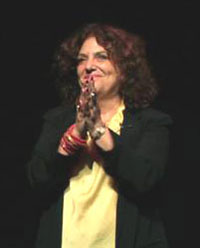
The continuous practice of meditation expands my capacity to inhabit the story with a sense of immediacy and distance. I can feel the difference between my present connection to the unfolding events of the narrative, what arises in space energetically between myself and audience and the territory of listening into the narrative that constitutes the enchantment of being in a story. These experiences are penetrating and vivid. The imaginative response generated by the presence and intuitive intelligence of a storyteller reaches into the territory within each listener where change is possible. The listening becomes a template for changing the way we see ourselves or expect outcomes. The riches of the flexibility of mind are engendered.
The combination of the direct experience of sitting practice and the study of dharma (the nature of mind and emotions, body and mind relationship and how to work with strong emotions) led to an exploration of story as the unfixed event in the present, beyond text. Meditation practice is all pervasive in one’s life. It has provoked a different kind of bond with audiences; of lightness and more profound listening. All of these elements of presence, accessing deep listening, awakening awareness, lightness of language and regard for the energy of situations are the tools that support healing and transformation of all kinds.
MEDITATION
Since the time of the Buddha, more than 2600 years ago, meditation instruction has been given as an oral transmission. Hence, the freshness and relevance of the experience is offered in the present and retained. This is because the one offering the instruction has practiced for a long time. Knowledge and trust is embodied and felt by the student. The “teacher” or “guide” understands the difference between accessing the natural and unconditional nature of mind from the thought about or concept of a “calm” mind. For a storyteller committed to compassionate action in the world or invigorating awakened imagination beneath the surface of our thinking mind, this increasing discernment is essential. It renders engaged storytelling fresh and penetrating, in the way that an oral transmission is appreciated. Otherwise we perform or work with others by rote or according to what we have learned. The meditation practice renders all of our activities alive in direct response. The authentic presence of a storyteller makes a huge difference in experience for audiences. Since the natural unconditional state of mind uncovered through practice is basically available to everyone, there is something alluring and potent that is called forth. It increases the sense of relaxation and aliveness. Just as a meditation instruction can only be pointed toward by explanation, storytelling can also not be described accurately by explanation alone. How many times someone has said jokingly, “I tell stories all the time,” and I agree. I have to engage them, however, in the storytelling event in order for them to feel into the subtle difference. Storytelling is far more than the sum of its parts. It is only alive in the energy between the audience and the teller. This kind of telling exists moment to moment in the deepening process of listening. The healer is present moment to moment. The story or prompts or questions manifest when the storyteller knows how images and symbols work. The healing teller is a kind of compassionate spy listening into both responses and visual and visceral clues that arise in space. A great Central Asian epic singer described his preparation: “First I tune myself, then I tune my instrument.” This statement followed his saying, “a good storyteller knows the story, the audience, their instrument and the meaning of the words. But if they are not inspired it is mere entertainment.”
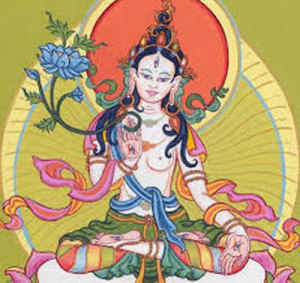
Meditation provides far more for a teller than a calm mind. It opens the fullness of perception to see and hear more clearly what is taking place rather than depending on interpretation or learned opinion. It is about being present with ability to know what is happening directly rather than depending on an idea of performance or interpretation of a text. I have been asked several times to write down a collection of stories as if they are pills, and each time I have turned down the request since it is not the text alone or understanding that heals, but the entire experience. The same story has multiple meanings. And, the telling doesn’t necessarily hinge on the text, but the very nature of being present and engaging imagination that releases fixation and negative assumptions. The heart is opened.
When the storyteller can access her inherent presence, and the relationship to an audience (rather than being lost in the words or assumed intent of the narrative) something happens that is unique to our art form. The territory where change occurs within is uncovered and an unbiased and natural state of mind is accessed. The bridge between the loosening of fixed idea and open mind/heart is through the voice and presence of the teller who provokes imaginative response from audiences. A twelve-year-old girl once said after a story, “What did you do to my head?” She had experienced the groundless aliveness of her own imagination. It was unfamiliar. It is not a surprise that this challenging practice of presence should be somewhat difficult in our world today that is addicted to quick fix/feel better solutions and understanding over experience that leads to wisdom.
Meditation is essential for a storyteller engaged in healing, transformation, and/or care working with individuals or groups. It provides a fundamental map into one’s own mind, freeing one’s mind from fear and grasping ideas. It has tremendous ramifications.
Mindfulness-Awareness is a simple technique. It allows a practitioner to experience the fullness of their mind beyond and including thinking. The traditional metaphor is of a cow, accustomed to being kept in a small barn, being let out onto a large meadow. “Sitting” practice provides a practical method for discovering who we are instead of who we think we are. In the process, we outwit our habit of mainly paying attention to the thinking mind. We come to know the bigger picture. This translates into our knowing ourselves in the performance as present and available for audiences, and sensing the bigger picture of the effect of the story unfolding. As storyteller writer from Mali, Amadou Hampate Ba said, “As a storyteller I am useless, or useful, or a revelation.” Useless, he said, when he is just entertaining. I would say there is a use for entertainment because it can distract us from suffering and preoccupations. Useful, he explained, when the psychological interpretations of tales are known. A revelation, he urged, when the teller is awake and initiated themselves. Then they transform and awaken their audiences preparing them for life and death. The practice lets us be the guide for our audiences into a revelation of their own inner space, alternative thinking, and natural joy regardless of circumstance. It lets others, through the alchemy of the event – experience a way to reframe personal narrative with integrity and surprise.
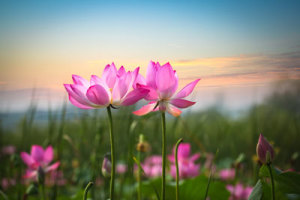 “Sitting” technique called shamata in Sanskrit (calm-abiding) provokes our knowing the spaciousness of our minds. Rather than getting hooked by a thought or the habit of forming instant stories about everything, we come to know the space within, out of which thoughts arise and disappear like clouds in the blue sky. The practice is described as gom (familiarity) in Tibetan. If we keep practicing we become as familiar with the space within as we are with the alluring pull of our thoughts. When I was first meditating I had a glimpse of the effect of my practice. In Jonesboro, David Holt said, “I love the stories. But I really love your pauses.”
“Sitting” technique called shamata in Sanskrit (calm-abiding) provokes our knowing the spaciousness of our minds. Rather than getting hooked by a thought or the habit of forming instant stories about everything, we come to know the space within, out of which thoughts arise and disappear like clouds in the blue sky. The practice is described as gom (familiarity) in Tibetan. If we keep practicing we become as familiar with the space within as we are with the alluring pull of our thoughts. When I was first meditating I had a glimpse of the effect of my practice. In Jonesboro, David Holt said, “I love the stories. But I really love your pauses.”
I was unaware of my new growing sense of relaxation; how with precision, words traveled between listeners and myself. Intrigued, I began a project at Beth Israel hospital in Manhattan telling stories to patients after surgery or undergoing fearful illnesses. I wanted to explore and understand the effect of listening to stories. During an hour-long fairytale in a small room on the Cardiology ward, one day, patients remarked after the telling, “thank you for letting me rest.” I had to ask what they meant. I was new to this (1984) and worried that I had bored them. A woman, whose eyes had been closed and I assumed was asleep, inspired me to whisper, “I can stop if I am keeping you awake.” She opened her eyes and said, “No please go on.” She fell back to sleep. Later, she explained, “I have not been able to rest. I am constantly filled with anxiety. During the story I finally rested.” I asked if she liked the story. I was curious to know if she heard it or just rested through it from the calm of my voice in the overheated room. “Oh yes. That girl is just like me. She is being pursued by something she does not understand. I especially appreciated the part of the story when she threw seeds into the air and they turned into stars. It gave me hope.” She explained the central mystery of the story that had eluded me. Every Friday afternoon more and more nurses wheeled in patients and came on their breaks to “relax” and feel “refreshed.”
Meditating does not mean that we suppress or devalue our thoughts. When we realize we are thinking, we return to placing our mind on our breath. In that instant, rather than thinking we failed (a habitual storyline that haunts many of us) we come to feel the difference between being rigidly caught up in thought and the sense of openness of feeling the radiant space of our beingness. This “spaciousness” is often what empowers someone captured in suffering to gain distance and space enough to either see an alternative viewpoint or recognize their provocation of unnecessary misery. The effect of the practice is a natural synchronization of body and mind. In the storytelling event, the embodied and present teller of the tale, or deep listener, becomes instigation for the trust in the teller. He or she gently instigates imaginative response that naturally brings the listener into embodiment. Drawn out of self consciousness into the story, a listener’s inherent healing resources are activated. Stress is lessened. Being present without manipulating my audience to pay attention to my words only or my performance unhinges their fixation on themselves as it offers room for association, memory, and creative insight. The space between creates an atmosphere of awareness that is alert. Letting go into a larger viewpoint – moment to moment – nourishes the listener. The discipline of the storytelling is spontaneity that has intelligence grounded in awareness of the energy of the situation.
Vi Hilbert, a great Salish elder and storyteller, once asked me in detail about a project with High School students. I was working with the after-effects of a murder in a NYC school. After I gave my explanations about what took place: what stories I told and how I engendered stories from the youth, Vi stopped me. “Do you think that elders knew magic?” Hesitatingly I responded, “Yes.” She laughed, “There is no magic. They knew how to listen.” She introduced me to stories about inner and outer listening that lead to transformation at the root of a problem. “A village suffered from endless illness and conflict. Many people came with medicine or solutions. Nothing changed. A shamaness was called into the village. She walked around. She listened. She watched. She was well trained. Then she sat down in one place and asked that a teepee be constructed for her. She sat inside and sang and told stories into the earth until it was healed. Then things and people began to change.” <VI Hilbert, 1998 conversation>
Taking instruction from a book offers inspiration and method. But hearing and gaining guidance protects us from our tendency to reinterpret. It is the “voice of experience” that provokes motivation and trust in the student. Meditation instruction is best given by a practiced meditator. Trust is aroused by authentic voice, just as an audience knows when the story is told by heart rather than by rote. There is a Turkish proverb, “The voice is half the wisdom.” The storytelling and the instruction, from this point of view, is not about moving toward a lesson or idea, but about the process of gaining experience. An instructor keeps reminding us that our goal is not to become without thought, remain unfeeling or become calm without emotional response. They point out our habitual patterns. They point us towards relying on being.
The outcome of increased awareness is compassion. It is compassion that informs us how to tell a story and which story to tell. It takes time to recognize which story has impact and why, and how to shape a story for individual situations. But, how the story penetrates depends on the one telling the tale. As Vi pointed out, we can become excellent listeners; potent and humble with intuition, intelligence, confidence and a spark of humor. It reminds me of the uncanny guides in fairytales. The first two brothers or sisters set off to heal their father the King. The two, older and more self-involved siblings, generally ignore the weird old woman or the odd person doing something that seems futile (like watering corn with a leaking pitcher). “Why should I stop and listen. I have something important to do.” But the youngest, more open son stops. He acknowledges the stranger, “You are working very hard watering corn with a broken pitcher.” He (or she) receives instructions that points a way to travel, and describes obstacles and how to overcome the obstacles. The uncanny actions that take them beyond their own limited perspective are as strange as sitting down and learning to watch our minds every day for those of us unaccustomed to pausing or looking within with a mirror (and not a hatchet). The borders crossed, like those traversed during meditation, are the limits of our own mind. Like any hero or heroine the joy of achievement is to discover our interconnection to ourselves, each other, the natural and spiritual world. Hence, we become present for other. Sometimes that is the healing. Learning patience is a delightful outcome of meditation practice. It is also a powerful tool for a storyteller. The skill of a patient mind is the capacity to act swiftly with intuition and intelligence in difficult situations, or to give space to what needs time and space. We allow intuition to guide us.
We can help listeners to loosen their grip on self-sabotaging opinions and assumptions when they seem to be true; uproot patterns of depair or hopelessness by replacing patterns of defeat with possibility engendered by imaginative response. As listeners become all aspects of a story, told or heard, in their mind’s theater of experience the oasis of repair opens and we find ourselves with alternatives to difficulty, or a fuller capacity to meet our situation. A woman in a conflict over her diagnosis entered a state of shut down cold anxiety. At her bedside I told a strange tale that I had learned from Roma women in Romania:
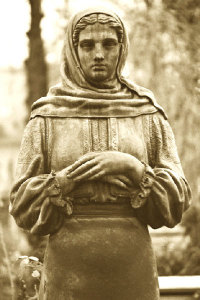
“A young woman was in love with a young man. She was forced to marry an abusive old man. On their wedding night when he approached her, she was so angry and unhappy that she turned into a stone.” I told her about the ten or twelve alternative endings the women had come up with. (We were practicing alternative thinking) Some of the endings were wildly funny. Others were poignant. And the last ending was the stone rolling out into the garden where the lover passed by. “The young man took the stone home and placed it by his door. Day after day he spoke to it until it softened and turned back into the woman.” The woman laughed out loud. Her hardness melted. She took my hand and squeezed it. Alternative thinking is practiced because our mind’s grip on a single answer or concept is shaken loose as we listen. It gives us a fresh start. The gift is appreciation. Compassion is returning to oneself.
A sense of inner calm pervades our presentation or communication regardless of one’s life situation or the tumultuous content of a narrative. The storm is felt or the pain acknowledged, but it does not drown the teller or the listener. The storyteller is then the living path through which an underground ocean within us is sensed without fear. The tenderness and alertness of the storytelling becomes a way in which the energy of our life force pulses through our senses into image in a way that enlivens us. We are reconnecting to our own sustainable energy source.
The storyteller who is a meditator can offer an experience akin to meditation in the telling or listening. Flowering space within allows us to reflect on problems and memories that arise without causing further fear or retraumitization. A word spoken becomes like an acupuncture needle at the right point on the meridian. Like ancient acupuncture, images infused with presence deepen the healing. The contemplative artist radiates availability and unbiased listening. This is a power. Often, before the story or session, a client begins to relax because the energy is soothing or causes natural breathing. A kind and present person draws the innate calm and presence that is already there in the other.
DESCRIPTION OF PRACTICE
There are three aspects to the practice. Each is important. The work of the practice takes time. The technique remains the same. Although I am giving the broad strokes of the practice, to begin a practice that has effect it is always best to receive the instruction through oral transmission.
The Body
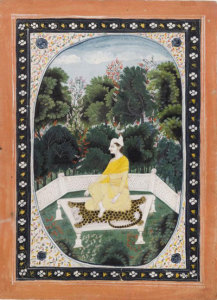
We either sit on a cushion with legs simply crossed, or on a chair with both feet on the floor. Posture is important and supports working with our minds. A slumped body invites distraction. There is a sense of “not too tight and not too loose”. The back is strong and upright. The chest is soft, exposing an open heart. The head is uplifted with the chin slightly down to extend the neck. In this practice, the eyes are open. It is a practice for the rest of our lives. So we are learning to relax and experience our minds natural state with our eyes open. Then we can over time find a sense of peaceful abiding in our everyday life no matter what is taking place. The gaze is downward in a diagonal glance. We look gently about two feet in front of us. It is not staring at the floor, or spacing out. It is a soft gaze. The bottom lip is slightly open not gripping our jaw. Our hands rest gently, palms open downwards on our knees, without any special gesture.
The Breath
This is the heart of the practice. But it is an illusory goal. We place the attention of the mind on the breath. Our minds are accustomed to follow whatever thought or feeling arises. In this case, we place the mind on the breath coming in and going out. Whatever your breathing pattern is at that moment that is what you attend to. There is no special yogic breath or counting in this practice. It is the mission impossible, as you will discover. We focus on breath since it is fundamental, and ongoing. We can count on it.
The Mind
Naturally the activity of the mind is thinking. Thoughts and emotions arise like waves in the ocean or bubbles in a soda pop bottle. Soon, even instants after settling our bodies and finding our breath, a thought arises. The third aspect of the practice is becoming aware of when we are thinking. We are instructed to gently return our attention to the breath. This is the exertion of the practice. We become more and more familiar with the activity and seduction of our thinking mind. As we notice that we are “caught” in thoughts one following another, we disengage with the content and return to the focus on the breath. We let the thought go. Two things start to happen: we find ourselves able to relax more and more, even when we are feeling intensely emotional. We develop more trust in recognition of how much we are drawn into and attached to thinking; what happens to us when we are thinking. Lost in thoughts, we sense our disconnection from our feeling or seeing where we are. This is a great discovery and benefit of the practice.
My first meditation teacher, Chogyam Trungpa, Rinpoche asked me what I do for work. I told him I was a storyteller (1979). He said, “Don’t keep collecting stories. Awaken to your gentleness.” Over the years I find that gentleness had everything to do with relaxing my grip on outcomes and solutions or from my fixation on my thinking mind only. I softened. Later in the interview he said, “Storytelling is the endless manifestation of the ceaseless play of the mind.”
As storytellers invested in healing and transformation, it seems natural to me that we start with ourselves; that we tune ourselves then we tell a story. If we are the listener to another’s story, we need to explore our own biases and reliance on what has been learned with self compassion; and develop a capacity for listening and trusting our intuition as well. We spend time improving our bodies, our muscles, our diet. Why not get to the heart of our lives and open our minds?
We are living in very difficult times. Truth is confused with opinion. Assumption, learned hatreds and media driven disconnection from innate intelligence is rampant. Concept has become more valued and sellable than knowledge or discernment. The active event of storytelling, when nourished with presence, is an oasis of repair. As we return to natural intelligence, we discover a ceaseless resource of compassion. Single believed stories that separate, causes tension or violence, or increases body illness can be seen as “another story.” What we find inherent is untarnishable. And for each of us we come to know the place within where we can always go, like the well at the end of the world, for inner rest and fresh perspective.
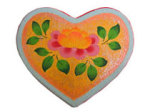
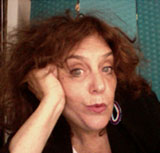 Laura Simms, storyteller, author, meditation instructor and humanitarian, is dedicated to compassionate action worldwide. Faculty for FOCUS HEALTH AND WELL BEING, Rutgers University, Newark; Teaches for High School Academy, NYU; Is senior teacher of Shambhala Meditation and Dharma Art. Laura directs GIRLS WRITE HAITI, Creative Story for Change Endeavor. She is artistic director for Hans Christian Andersen Storytelling Center and POWER OF STORY symposium. Her most recent book is OUR SECRET TERRITORY: The Essence of Storytelling. Laura is on the Executive Committee of HSA. Laura won Sesame Street’s SUNSHINE AWARD for work with children, and a Lifetime Achievement Award from the National Storytelling Network.
Laura Simms, storyteller, author, meditation instructor and humanitarian, is dedicated to compassionate action worldwide. Faculty for FOCUS HEALTH AND WELL BEING, Rutgers University, Newark; Teaches for High School Academy, NYU; Is senior teacher of Shambhala Meditation and Dharma Art. Laura directs GIRLS WRITE HAITI, Creative Story for Change Endeavor. She is artistic director for Hans Christian Andersen Storytelling Center and POWER OF STORY symposium. Her most recent book is OUR SECRET TERRITORY: The Essence of Storytelling. Laura is on the Executive Committee of HSA. Laura won Sesame Street’s SUNSHINE AWARD for work with children, and a Lifetime Achievement Award from the National Storytelling Network.
AUTHOR’S NOTE
Trungpa, Rinpoche was born in Tibet. However, he developed an approach to meditation that suited westerners. He said, as the Dalai Lama has said how surprised he was at the amount of lack of self worth that haunted us. He presented meditation as less religious and more secular in order to emphasize that it is about discovering our minds and not adapting a religion or system of belief. The two most pithy books on meditation practice and study are: SHAMBHALA; THE SACRED PATH OF THE WARRIOR by Trungpa, Rinpoche; and TURNING THE MIND INTO AN ALLY by SAKYONG MIPHAM, RINPOCHE (both published by Shambhala Books, Boston).
